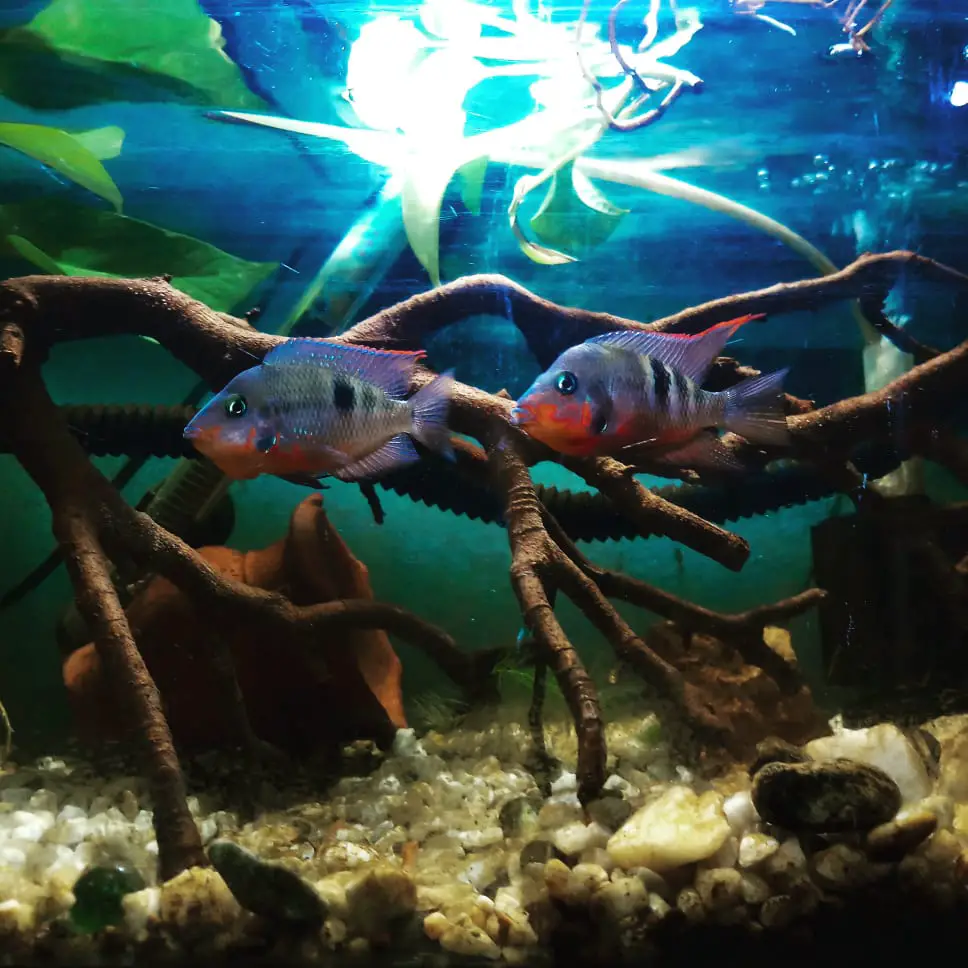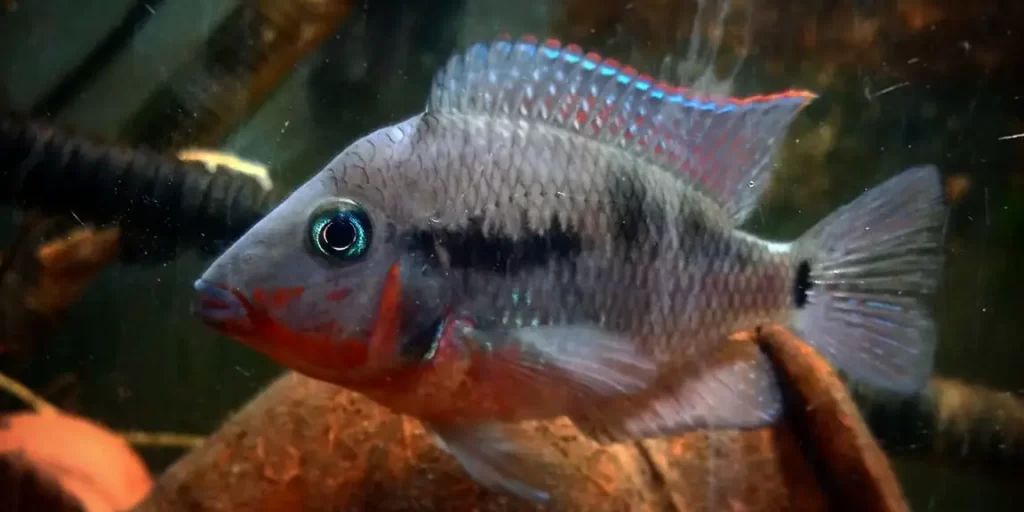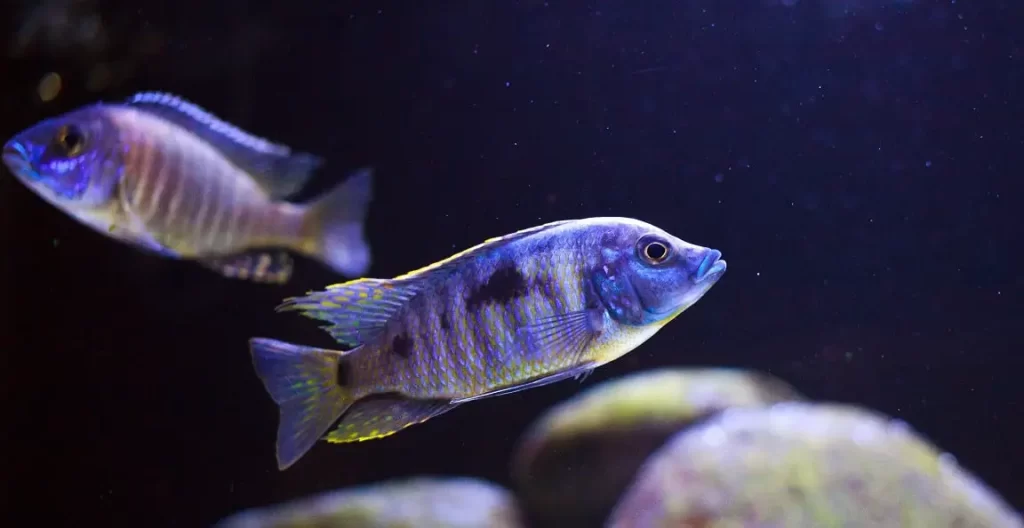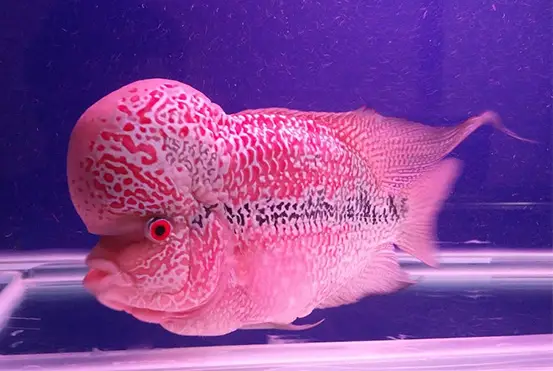Cichlids are widely distributed aquarium fish of family Cichlidae with around 3000 species, which makes it one of the largest families of species in the world. Cichlids have different origins depending upon the exact kind. They range from tropical parts of America, mainland Africa and southern parts of Asia. Cichlids are freshwater fish. Oscar, angelfish, discus, and Firemouth Cichlid is one of the most common cichlids preferred by fish-keepers.
In this section, you are going to learn about Firemouth Cichlid. You will learn about caring for them, feeding them, and also breeding them. This fish is quite hardy as compared to other fish of the same family. You will know everything related to them so you can start keeping them just after you complete reading this article.
Introduction to Firemouth Cichlid
Thorichthys meeki, also known as Firemouth Cichlid, are peaceful and colorful fish. If you are thinking about adding some colors to your aquarium, then surely go for them. Today, they are scarcely found in North America and have spread all over the world and are among the favorites of fish-keepers globally. These fish form monogamous pairs. They are not schooling fish but do well in a community tank, although they might become aggressive to other fish during mating season.
Origin
Firemouth Cichlids are native to Central America’s freshwater system. They are found in slow-moving shallow water. These fish prefer living in caves. The natural water system that Firemouth Cichlids inhabit has hard and turbid water.
Appearance
The name of this fish is Firemouth Cichlid because of the red coloration that the males get around their throat during territorial quarrels and spawning season. Sexual dimorphism is weak as the males are slightly colorful and larger than the female. They also have longer fin rays.
Talking about their size, males reach about 6 inches, and females tend to grow up to 5 inches maximum. The major distinct character of Firemouth Cichlid is a black spot or a whole black column in the middle of the body. In a healthy condition, they can live about 8-10 years.
Typical Behaviour
Firemouth Cichlids are semi-territorial and sometimes can get a little aggressive, especially during mating seasons. They are not schooling fish. They tend to move things like substrate and decorations around in the tank. These fish like to dig and stay near plants all the time. You should make sure that they don’t damage the plants. They are monogamous species, which means that they will have only one partner in their lifetime or will mate with only one partner. They also make excellent parents, although they may eat some of their fries. Remaining peaceful every time, males can be a little aggressive during mating season and can be a bit protective towards fries and eggs.
Firemouth Cichlid Tankmates
You may be surprised to know that these fish do amazingly well with livebearers and other schooling fish. They are usually peace-loving fish, but the males can get over aggressive during the spawning season, so you must remove other fish. The male can sometimes get in trouble with bigger fish due to its aggressive nature. Shrimps and snails shouldn’t be kept as tankmates as they are used as treats for cichlids. Likewise, slow swimming fish should be avoided like angelfish. Small schooling fish like catfish and tetras can be a perfect example of tankmates for Firemouth Cichlids.
Caring for Firemouth Cichlid
In this particular section, I have included the basics of caring for a fire- mouth cichlid. I have included water parameters, tank conditions, and diet so that you can be confident enough to care for a Firemouth Cichlid just after completing this.
Water Parameters
The original habitat of Firemouth Cichlid is the shallow turbid water of North America. It is a tropical fish, so it needs relatively warm water. The adequate water temperature would be 75-86 F. The water can be slightly alkaline but not excessively. The pH should range from 6.5 to 8.0. Water hardness should be maintained at about 8-15 dGH. The water current should be medium. These parameters will ensure that the tank resembles their natural habitat. A powerful filtration system must be installed so that the level of ammonia, nitrates, and nitrites remain low.
Tank Size and Conditions
The ideal size for a pair of Firemouth Cichlids is 30 gallons. They are not schooling fish, so you must keep either a pair or solo. For every one Firemouth Cichlids, you add/increase 15 gallons of water. So, for one Firemouth Cichlid, a size of 15 gallons is perfect. Although they are freshwater fish, they can withstand a slight salinity in the water. The salinity should be about 15% of a regular seawater tank. The plants should be placed at the edges of the tank, so they have enough swimming space. You can almost recreate its natural habitat by using plenty of driftwoods and cave formations using rocks.
Firemouth Cichlid Diet
Firemouth Cichlids aren’t that picky eaters as they will eat almost anything that you throw at them. They are omnivores, so their diet should consist of a variety of food. In their natural habitat, they devour on aquatic arthropods like shrimps and small invertebrates. They constantly dig through the substrate in search of food. They prefer flake, live, and frozen food. Treats in the form of shrimps and bloodworm must be given frequently to make them feel well treated. Mosquito larvae and Tubiflex can also contribute to a complete diet. Fresh vegetables like spinach, broccoli, carrots, and peas can be given from time to time. The vegetables must be boiled before they are given to the fish.
Common Diseases and Infections
Among all species of the cichlid family, they are one of the hardy ones, and if you have maintained your tank properly, then your fish is safe. However, minor infections and common diseases will always get your fish one way or the other. Ich is common among all kinds of aquarium fish. White spots all over the body, primarily on fins and gills, are indications of ich. Increasing temperature up to which the fish can tolerate is the best way to fish this. Water must be changed immediately. The Carbon filtration system must be removed while the treatment is going on.
However, prevention is always better than cure. So, keeping the tank clean, performing frequent water changes, checking chemical levels, and trying to reduce them, not overfeeding and reducing stress by controlling overcrowding and sexual bullying, can help prevent your cichlid from getting any kind of disease at all.
Breeding
Breeding them is easy, but you must help them choose the correct partner for your fish and not rush things. So, while buying cichlids, you can buy a monogamous pair from the store. You can also pair them at home. To do this, you can drop 6 to 8 fish in a tank and let them pair for themselves. After the pairing has completed, the female will lay around 200-500 eggs at a time. Then the male will fertilize the eggs and protect the eggs. For the female to lay eggs, she will prioritize a smooth surface, so you need to make sure your tank has at least one. She will not lay eggs between gravels or at the sand. She will rather choose a glass surface and big leaves.
The eggs will hatch after 3 to 4 days. When the eggs are hatched, the male will protect them but will also eat some of them to prevent overcrowding. So, the best option is to separate the fries after they are born. But it is ok if you want to keep them with their parents.

Feeding The Fries
The fries will eat almost anything that fits in their mouth. Micro worms and macroalgae are some good feeding options available to your fish. Be sure that anything you give to the fry is finely crushed.
Conclusion
To sum up, I must say that Firemouth Cichlids are not ideal fish for beginners. However, if you have been keeping small fish for some time and want to upgrade your tank, then prioritize this cichlid. Cichlids are never perfect to start your fish keeping-hobby. They can be a colorful upgrade to your beginner tank. But be sure that you place them with the right tankmates, feed them the right way, and maintain water parameters well.






